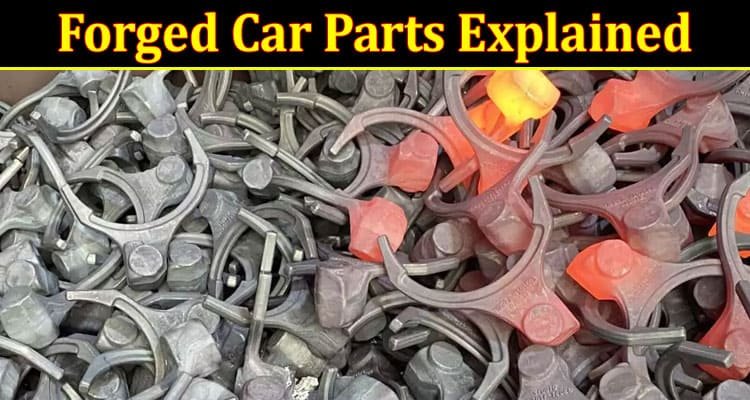Nowadays, forged car parts are widely used in the auto-manufacturing industry, due to their advantages over cast car components in weight, durability, and aesthetics. If you are looking to learn more about forging car parts, this article is for you!
We’ll dive deeply into the world of forged car parts, anaylising in detail what forging is, how the forging process works, commonly forged car parts, and their benefits. I’m sure, after reading, you will have enough understanding of this topic. Without further ado, let’s get started!
What Is Car Part Forging?
Forging is an important manufacturing process in car production. It refers to shaping a piece of metal via a series of steps, such as heat and pressure, hammering, and cooling off until it is transformed into the desired shape. The car component forging process plays a crucial role in the production of cars, not just for aesthetic purposes, but also for improving the vehicle’s overall performance.
Understanding The Forging Process
First of all, you need to heat the selected metal piece to a certain temperature, depending on the material (forged car parts are usually made from steel, aluminum, or titanium). This will make it easier for the metal piece to take on a new shape. After heating, the metal piece will be placed into a die and subjected to high pressure, like hammering or pressing, for deformation.
Then, quickly cool down the metal and harden it by soaking it in water or oil. This step is key to enhancing the metal’s durability and strength.
After that, you can trim the metal’s shape with specific machines to make sure that the metal’s dimensions and specifications are right, as some excess material may ooze out during the pressing phase.
Benefits for Forging Car Parts
Forged car parts usually boast strong resilience against deformation, wear, fatigue, and impact. This is because during forging, they need to undergo immense heat and pressure, which in turn makes the metal’s internal structure more compact.
Additionally, forced car parts are usually lighter, which reduces the vehicle’s overall weight, leading to higher fuel efficiency and better performance.
They are also more durable and lower-maintenance, and can be seamlessly integrated into complex automotive systems within a short amount of assembly time.
What type of car parts need to be forged?
There are many auto components that need to be forged before being put to proper use. Some of them are listed as follows.
Pistons: Pistons are the key parts of a vehicle’s engine. Often, they need to be able to withstand high temperatures as your engine heats up. Forging can make the pistons more heat-resistant, even under challenging heat conditions.
Connecting rods: Once forged, the connecting rods will be lighter and more durable, which facilitates smooth operations.
Crankshafts: Forged crankshafts can withstand the immense forces generated within the engine when they are converting linear motion into rotational energy.
Fenders: Forged fenders are a perfect blend of lightweight design and strength. They can effectively protect the vehicle and passengers from debris and collisions.
Hoods: Forged hoods can reduce the vehicle’s weight and thereby enhance the fuel efficiency.
Bumpers: Forged bumpers can absorb impact better during collisions, which can extend the lifespan of your vehicle, and provide a better driving experience.
Control Arms: Forged control arms can contribute to the reduced weight of the vehicle.
Tie Rods: If properly forged, tie rods can show enough durability to make sure the steering is precisely aligned.
Car parts forging is usually a complex process that requires excellent skills and meticulous equipment. If you are looking for forged car parts in bulk for your business, make sure you find a reliable forging manufacturer who understands your specific requirements and can design custom-made forged parts for you. Poorly forged car parts are likely to ruin your business reputation and reliability.
Conclusion
Across the year, forging techniques have swept the automotive industry by enhancing different car part’s durability and strengths. Since these car components are shaped precisely in alignment with certain specifications, the assembly process takes less time as well, improving operational efficiency greatly. If you are a vehicle business owner, never overlook the importance of working with a trustworthy forging manufacturer!

